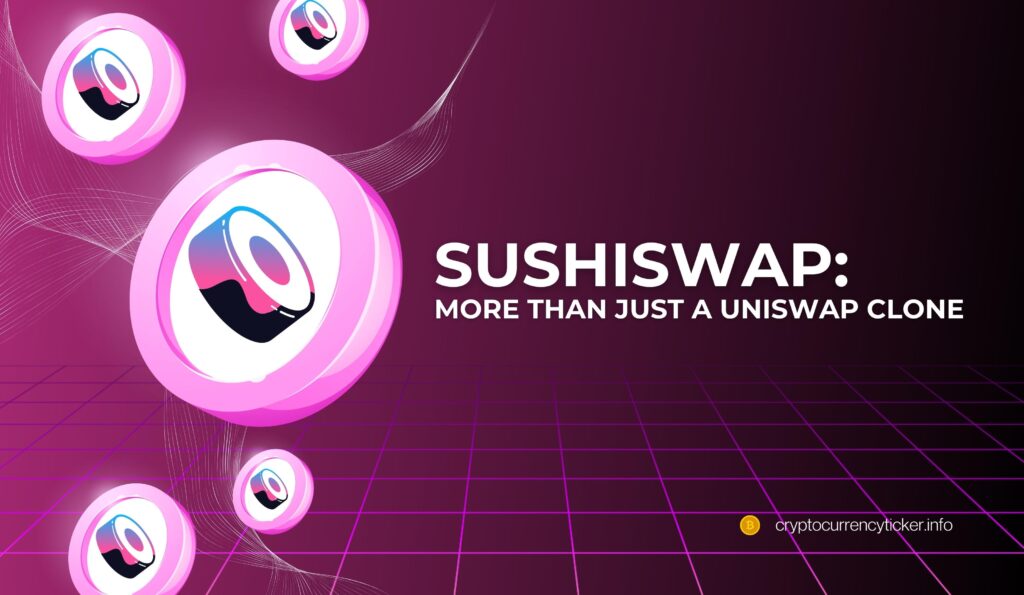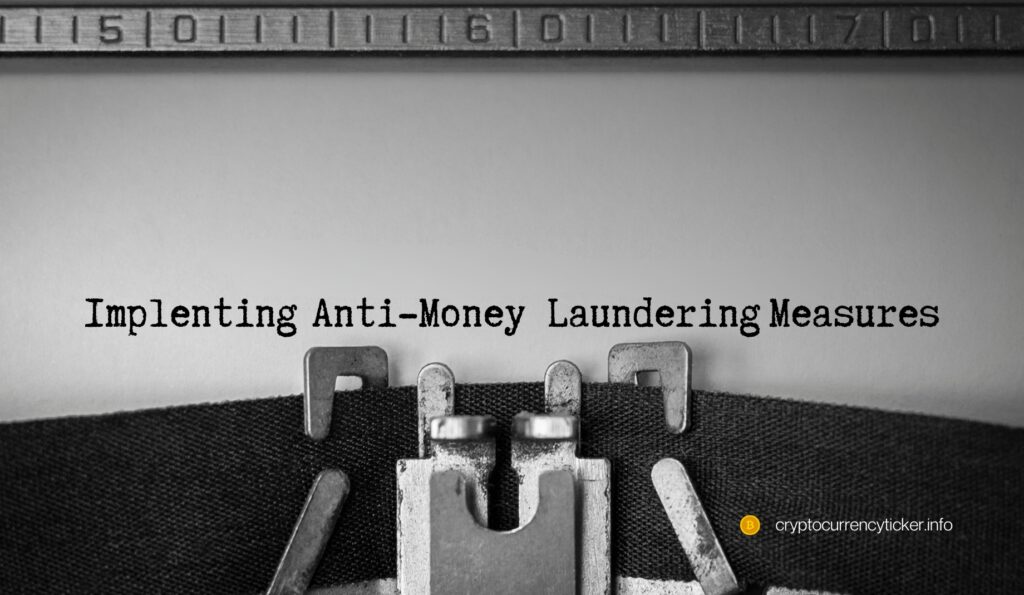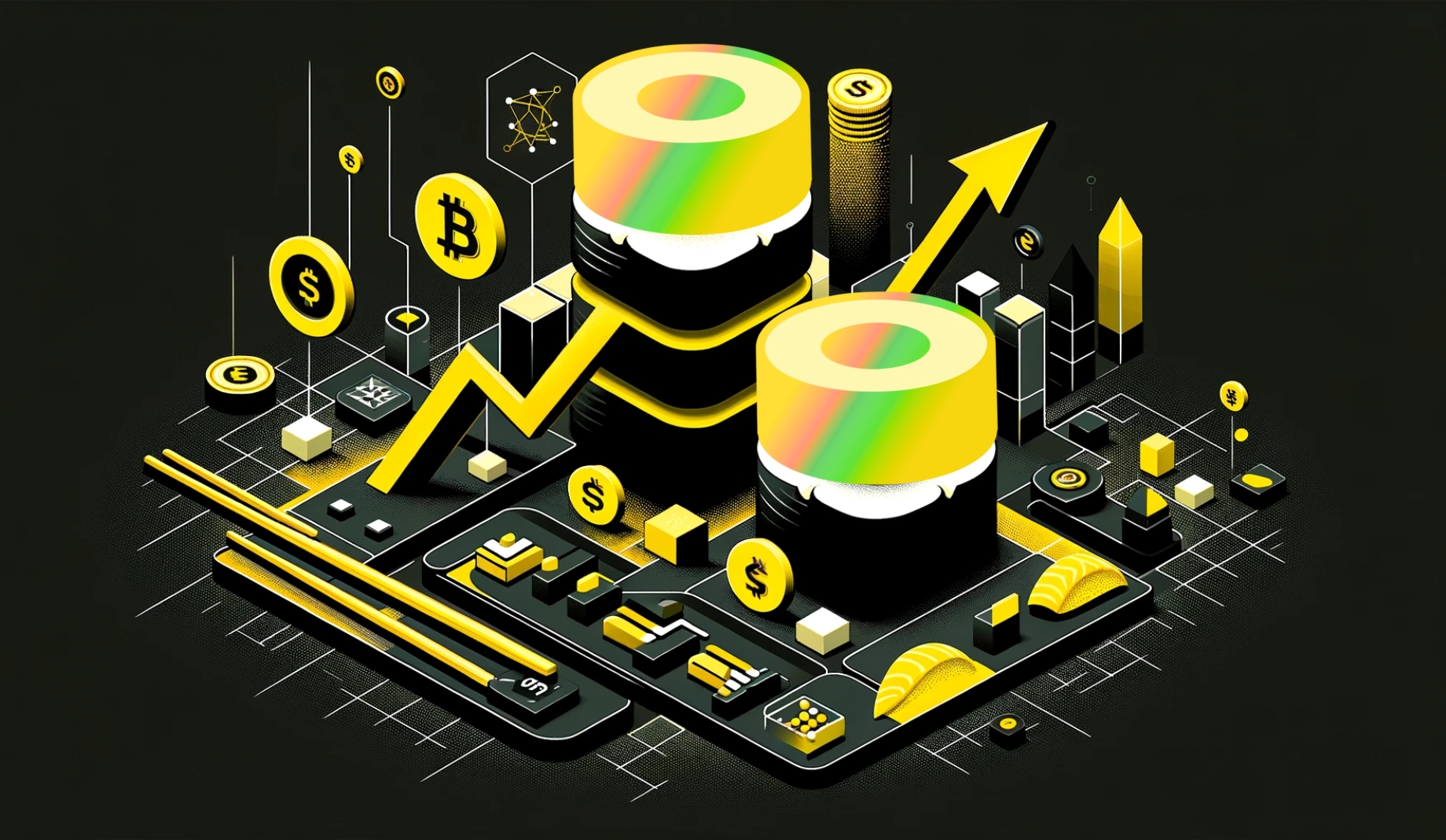In the dynamic world of blockchain and cryptocurrency, decentralized exchanges (DEXs) have emerged as a revolutionary concept, challenging the traditional, centralized way of trading digital assets. Among these groundbreaking platforms, SushiSwap stands out as a prominent player, reshaping the decentralized finance (DeFi) ecosystem with its unique offerings and innovative approach.
What are Decentralized Exchanges (DEXs)?
Decentralized exchanges represent a paradigm shift in the trading of cryptocurrencies. Unlike their centralized counterparts, which rely on an intermediary or a centralized authority to facilitate trades, DEXs operate on a peer-to-peer model. This design not only enhances security by reducing the risk of hacking and fraud but also upholds the ethos of blockchain technology by promoting transparency and autonomy among users.
At the core of DEXs lies the concept of smart contracts. These self-executing contracts with the terms of the agreement directly written into code automate and enforce the trading process without the need for intermediaries. This automation not only streamlines transactions but also ensures a trustless environment where users retain full control over their funds.
SushiSwap’s Role in the DeFi Ecosystem
SushiSwap, launched in September 2020 by anonymous developers known as Chef Nomi and 0xMaki, has rapidly ascended to prominence in the DeFi space. Running on the Ethereum blockchain, it exemplifies the innovative spirit of DEXs. SushiSwap operates using an Automated Market Maker (AMM) model, a distinctive feature that sets it apart from traditional exchange platforms. In this model, there are no order books. Instead, trades are made against a liquidity pool, and prices are determined algorithmically based on the supply and demand within these pools.
This model also encourages community participation. Users who provide liquidity to these pools are rewarded with a portion of the transaction fees as well as SushiSwap’s native token, SUSHI. These tokens are not just a reward mechanism; they also confer governance rights, allowing holders to have a say in the future development of the platform.
SushiSwap represents more than just a trading platform; it’s a testament to the power of decentralization. Its rapid growth and adoption underscore the increasing demand for more democratic, secure, and transparent trading systems in the digital age. As we delve deeper into the intricacies of SushiSwap and its contributions to the DeFi ecosystem, it becomes evident that its journey is not just about trading and technology, but also about the evolving narrative of financial autonomy and empowerment in the digital era.
The Founding of SushiSwap: A Revolutionary Fork
The story of SushiSwap is a narrative of innovation and divergence in the DeFi realm. It was born not from scratch, but as a fork of UniSwap, one of the first and most popular decentralized exchanges on the Ethereum blockchain. This strategic move by the developers Chef Nomi and 0xMaki in September 2020 was not just about replication, but about introducing significant enhancements and a unique vision to the DeFi space.
SushiSwap: More Than Just a UniSwap Clone

While it’s true that SushiSwap originated from UniSwap’s open-source code, it’s a misnomer to dismiss it merely as a clone. Right from its inception, SushiSwap aimed to address some gaps in the existing DeFi landscape. One of the key differentiators was its introduction of the SUSHI token. This native token wasn’t just another digital asset; it represented a fundamental shift towards a more community-centric approach in DeFi.
The introduction of SUSHI token brought with it a novel incentive mechanism. Liquidity providers on SushiSwap were rewarded with SUSHI tokens, which, in addition to yielding a portion of the transaction fees, granted them governance rights. This meant that the users, those who provided liquidity and engaged with the platform, had a direct stake in the decision-making processes affecting the future of SushiSwap. This participatory approach was a significant departure from the norm and resonated strongly with the DeFi community, driving rapid adoption and growth.
Innovation and Community: The Hallmarks of SushiSwap
Another distinguishing aspect of SushiSwap was its focus on continuous innovation and community engagement. The platform’s developers were keen on not just building a DEX but fostering an ecosystem. The governance model empowered users to propose and vote on changes, leading to a dynamic and evolving platform.
This approach to governance and innovation has been integral to SushiSwap’s success. It has helped the platform swiftly adapt to the needs of its users and the broader market trends. From introducing yield farming opportunities to integrating with other blockchain networks for increased accessibility and utility, SushiSwap has shown a consistent commitment to growth and evolution, driven by its community’s needs and aspirations.
SushiSwap’s Market Performance and Volume Analysis
SushiSwap’s ascent in the DeFi arena is not merely a tale of innovation and community involvement; it is also backed by robust market performance and impressive trading volumes. To gain a deeper understanding of SushiSwap’s impact on the decentralized exchange landscape, it’s essential to delve into its market metrics and performance analysis.
The Trading Volume Phenomenon
As of recent data, SushiSwap has consistently ranked among the top decentralized exchanges globally in terms of 24-hour trading volume. With trading volumes often surpassing tens of millions of dollars, SushiSwap has become a liquidity hub for cryptocurrency enthusiasts and traders alike.
SushiSwap’s trading volume can be attributed to several factors. Firstly, its user-friendly interface and low barriers to entry have made it accessible to a wide range of users, from DeFi veterans to newcomers. The user-centric approach, combined with its attractive reward mechanisms, has led to a thriving community of liquidity providers and traders.
A Comparative Analysis
To better appreciate SushiSwap’s standing in the DeFi landscape, it’s instructive to conduct a comparative analysis with other leading decentralized exchanges. UniSwap, from which SushiSwap forked, remains a significant contender. However, SushiSwap’s introduction of the SUSHI token and unique governance model have set it apart.
Furthermore, SushiSwap’s DEX aggregation router, a feature slated for release in the first quarter of this year, is poised to enhance its market position. This router is expected to boost the platform’s swap volumes, potentially increasing its market share significantly.
The growth and prominence of SushiSwap in the decentralized exchange sector are not accidental but a testament to its innovative approach, active community, and commitment to providing value to its users. In the ever-evolving crypto landscape, SushiSwap’s journey is a remarkable case study, showcasing how a decentralized platform can not only disrupt but also excel in a highly competitive market
Innovation at SushiSwap: DEX Aggregation Router and AMM Model
One of the key drivers of SushiSwap’s success lies in its commitment to innovation and the continuous improvement of the decentralized exchange experience. Central to this innovation is the upcoming launch of the DEX aggregation router, a development expected to elevate SushiSwap’s capabilities and further solidify its position in the DeFi landscape.
The DEX Aggregation Router: Uniting DeFi Liquidity
SushiSwap’s DEX aggregation router is a significant step forward in simplifying and enhancing the DeFi trading experience. This tool aims to address a common challenge faced by DeFi traders: fragmented liquidity across various decentralized exchanges. With the aggregation router, SushiSwap aims to provide users with a seamless and efficient way to access liquidity across multiple DEXs, all within a single interface.
This innovation is expected to have several notable benefits:
- Improved Liquidity: Users will be able to tap into a broader pool of liquidity, resulting in reduced slippage and more favorable trading conditions.
- Enhanced Asset Availability: The aggregation router will enable users to access a wider range of digital assets and trading pairs, increasing the platform’s utility.
- Streamlined User Experience: Traders will no longer need to switch between multiple DEXs to find the best prices or access specific assets. This simplifies the trading process and reduces friction for users.
Automated Market Making (AMM) Model: SushiSwap’s Core Mechanism

At the heart of SushiSwap’s functionality is its Automated Market Maker (AMM) model. This model, a cornerstone of DeFi, eliminates the need for traditional order books and introduces a more decentralized and efficient approach to trading.
In the AMM model, users provide liquidity to pools, contributing their assets to facilitate trades. These liquidity pools are used to automatically execute trades based on predefined algorithms. Prices are determined algorithmically, taking into account the ratio of assets within the pool. As a result, users can trade assets without relying on counterparties, creating a trustless and permissionless environment.
SushiSwap’s implementation of the AMM model has contributed to its rapid adoption. It provides users with a straightforward and efficient way to participate in DeFi trading, all while earning rewards through its innovative tokenomics.
As SushiSwap continues to evolve and introduce groundbreaking features like the DEX aggregation router, it exemplifies the spirit of innovation that characterizes the DeFi space. The platform’s commitment to simplifying and enhancing the trading experience for users is a testament to its vision of a decentralized and democratized financial ecosystem.
Community and Governance: The SUSHI Tokenomics
SushiSwap’s remarkable journey in the decentralized exchange arena extends beyond its technological innovations and market performance. At its core, SushiSwap embodies the principles of community-driven governance and decentralized decision-making, underpinned by its native token, SUSHI.
SUSHI Token: Beyond a Reward Mechanism
The SUSHI token serves as the lifeblood of SushiSwap’s ecosystem. While it does reward liquidity providers with a share of transaction fees, its significance goes far beyond a simple incentive mechanism. SUSHI holders have a voice in shaping the platform’s future through decentralized governance.
One of the notable features of SUSHI governance is its ability to propose and vote on protocol upgrades and changes. This means that SushiSwap’s development and evolution are determined by the collective will of its users. This participatory approach empowers the community and aligns with the ethos of decentralization, where decisions are made by those directly affected by them.
Liquidity Providers and SUSHI Staking
Liquidity providers play a pivotal role in the SushiSwap ecosystem. By contributing their assets to liquidity pools, they facilitate trading and earn a portion of the fees generated by those pools. This aligns with the principles of decentralized finance, where users are actively involved in the platform’s operations and rewarded for their participation.
Moreover, liquidity providers can stake their earned SUSHI tokens in the SushiBar, a mechanism that allows them to earn a share of the platform’s revenue. This approach not only incentivizes liquidity provision but also ensures that those who contribute to the platform’s growth are directly rewarded.
Community Engagement and Growth
SushiSwap’s success isn’t solely a result of its technology or tokenomics; it’s a testament to its vibrant and engaged community. From developers proposing improvements to users participating in governance decisions, SushiSwap’s community is a driving force behind its evolution.
The platform actively encourages community involvement through initiatives such as the SushiSwap Improvement Proposals (SIPs). These proposals enable anyone to suggest changes or additions to the protocol, fostering an environment of innovation and collaboration.
Regulatory Challenges and Anti-Money Laundering (AML) Controls
The path to innovation and growth in the decentralized finance (DeFi) space is not without its regulatory hurdles. SushiSwap, like many DeFi platforms, has had to navigate a shifting regulatory landscape while maintaining its core principles of decentralization and autonomy.
Regulatory Landscape for DeFi
DeFi platforms, including decentralized exchanges like SushiSwap, have gained the attention of regulators worldwide. While DeFi offers significant benefits in terms of accessibility and transparency, it also raises concerns related to financial regulations, investor protection, and anti-money laundering (AML) measures.
SushiSwap, as a leading DeFi player, has not been immune to these concerns. As it continues to grow and attract more users, it must strike a balance between adhering to regulatory requirements and preserving its decentralized nature.
Implementing AML Measures

In response to these challenges, SushiSwap has taken proactive steps to address AML concerns and ensure a safe and compliant trading environment. While DeFi platforms are inherently decentralized and do not have the same level of control as centralized exchanges, SushiSwap has implemented several measures:
- KYC/AML Integration: SushiSwap has explored partnerships with third-party providers to integrate Know Your Customer (KYC) and AML checks, allowing it to identify and mitigate potential risks associated with illicit activities.
- Transaction Monitoring: The platform has implemented transaction monitoring tools to detect and report suspicious activities. This approach aligns with the broader industry’s efforts to combat financial crimes.
- Regulatory Compliance: SushiSwap remains vigilant about staying informed about regulatory developments. It actively seeks legal guidance to ensure that its operations are in compliance with relevant laws and regulations.
It’s worth noting that while these measures aim to address AML concerns, they do not compromise the core principles of DeFi, such as user privacy and decentralized control over funds. SushiSwap’s approach reflects the industry’s commitment to responsible growth and cooperation with regulatory authorities.
The Ongoing Regulatory Dialogue
As the regulatory landscape for DeFi continues to evolve, platforms like SushiSwap remain engaged in an ongoing dialogue with regulators. This dialogue seeks to strike a balance between innovation and compliance, ensuring that DeFi can continue to provide accessible and secure financial services to users globally.
The Future Trajectory of SushiSwap in the DeFi Landscape
The journey of SushiSwap through the decentralized finance (DeFi) landscape has been marked by innovation, community engagement, and a commitment to responsible growth. As we look to the future, it’s essential to explore what lies ahead for this pioneering decentralized exchange and how it plans to shape the DeFi ecosystem.
SushiSwap’s Growth Prospects
SushiSwap’s success story doesn’t end with its current position as a prominent decentralized exchange. The platform has ambitious growth plans that encompass several key areas:
- DEX Aggregation Router: The impending release of SushiSwap’s DEX aggregation router promises to be a game-changer. By aggregating liquidity from various decentralized exchanges, it aims to provide users with enhanced trading options, improved prices, and increased convenience. This move positions SushiSwap to capture a more significant share of the DeFi trading market.
- Cross-Chain Integration: To expand its reach and accessibility, SushiSwap is exploring cross-chain integration. By bridging to other blockchain networks, it aims to tap into new liquidity pools and enable users to trade assets seamlessly across different blockchains.
- Innovation in Tokenomics: SushiSwap continues to innovate in its tokenomics to reward users and incentivize participation. Token holders can expect new features and mechanisms that enhance their experience and offer opportunities for passive income.
- Community-Driven Development: SushiSwap’s commitment to community governance remains unwavering. The platform will continue to empower its users to propose and vote on changes, ensuring that it evolves in response to the needs and aspirations of its community.
SushiSwap’s Role in the DeFi Space
The DeFi landscape is characterized by rapid evolution and innovation. SushiSwap, as a key player, is poised to influence the direction of DeFi in the coming years. Its emphasis on accessibility, user empowerment, and responsible growth aligns with the broader goals of the DeFi movement.
SushiSwap’s journey is not just about technological advancements but also about advocating for financial autonomy and inclusion. It provides users with a platform where they can participate in DeFi trading, governance, and innovation, regardless of their geographical location or financial background.
In an era where traditional financial systems are facing challenges and where access to financial services is not equitable, platforms like SushiSwap represent a new paradigm. They demonstrate how blockchain technology can empower individuals and communities to take control of their financial destinies.
Conclusion
In conclusion, SushiSwap’s remarkable journey in the decentralized exchange landscape exemplifies the power of innovation, community-driven governance, and responsible growth within the realm of DeFi. From its inception as a UniSwap fork to its evolution into a pioneering platform with unique tokenomics and groundbreaking features like the DEX aggregation router, SushiSwap has demonstrated its commitment to enhancing the user experience while adhering to evolving regulatory standards. As it sets its sights on cross-chain integration and continued community-driven development, SushiSwap remains a guiding light in the DeFi space, representing a future where financial autonomy and inclusion are accessible to all.
